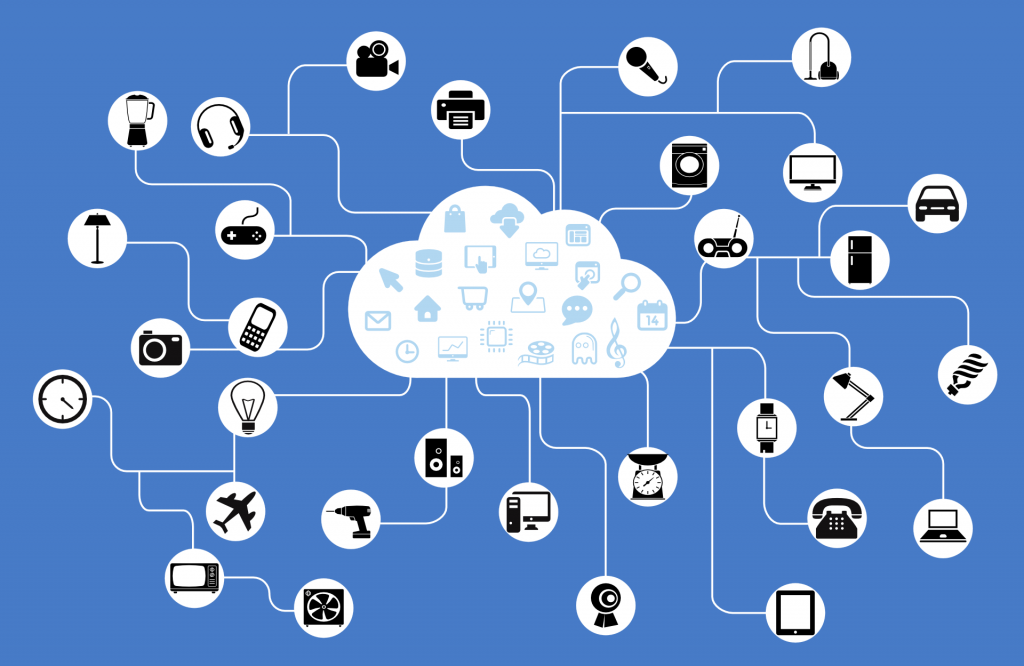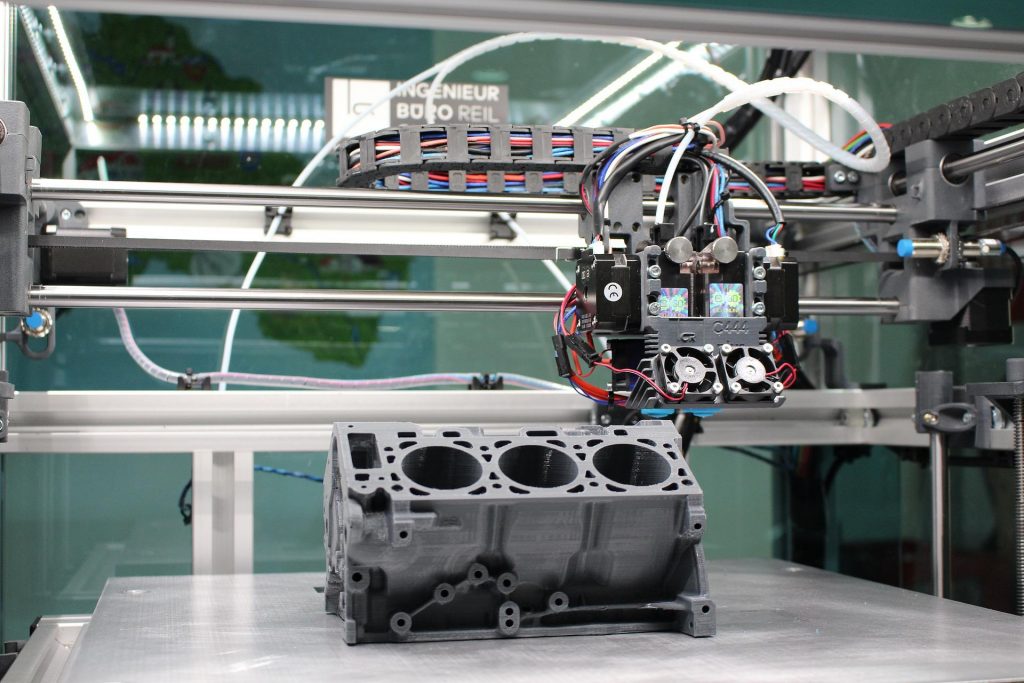
How Are You Embracing Technology In Your Business?
Julian Wallis
19 min read

Since the turn of the century, numerous technological innovations have changed how we do business. We’ve moved considerably far from the days of flyers and localised television ads and can now cater to a global audience at the press of a button.
As technology evolves and grows, businesses that leverage it reap the rewards while leaving the competition behind. Yet, many don’t realise the potential that’s still out there to vastly improve their bottom lines. We’re here to widen your horizons so you can do just that!
Why Keep Up With Business Technology (BT)? 🤷
Business technology is simply information technology integrated into business operations. It’s been a mainstay for successful businesses since the 2000s. You’re using it too – your website, CRM platform, accounting and inventory control systems, and so on. Why then should you keep up with business technology when things are working out just fine right now?
Whether you’re a well-established business raking in profits or a growing company wanting to reach greater heights, disruption is the name of the game. Kodak, Blockbuster, and Nokia rose to great heights only to fall hard. New technology could put you out of business if you fail to evolve and adapt.
Staying up to date with modern business technology lets you keep your market share secure while simultaneously helping improve operations and reduce costs. Fight off your competition and lead the pack with faster development cycles, focused and efficient marketing methods, disruptive business models, and much more.
The continued success and future-proofing of your business rely heavily on how optimally you use technology. But, aside from the standard IT infrastructure, what else can be done? Check out these 10 areas for inspiration on what’s actually possible with business technology in this day and age.
The Internet Of Things (IoT) 🌐
We know that computers and smartphones can connect to the internet, but when other physical objects such as kitchen appliances and cars do, that network is called the Internet of Things. A smartwatch is a simple example of an IoT wearable device that provides individuals with health and fitness-related information.
The Internet of Things helps by allowing you to record and monitor various data types, providing deeper insights to make informed decisions. The list of IoT devices keeps growing, so there’s plenty of room here to capitalise.

Consider investing time and research into IoT, especially if your business involves manufacturing, to enhance business processes and solutions through intelligent decisions and efficient designs by gathering all your data in one place through sensors, devices, gateways, and platforms.
For instance, you could experiment with connecting sensors to your products to track their usage and determine what could be done to improve the user experience or make decisions about production and storage. Now that’s what it means to be data-driven!
Amazon, Ericsson, and Garmin are some companies that have been using IoT to streamline their products and services, allowing them to meet rising demands at lower costs with faster turn-around times, all without compromising on quality.
Digital Employees & Digital Employee Experience (DEX) 👩💻
Imagine Siri or Cortana automatically responding to customer queries and handling routine tasks to save you time and money. That’s digital employees or digital workers in a nutshell – software robots and AI-powered assistants designed to support your human workforce for better and faster results.
Everyone knows about chatbots and how they help in sales and product support. What other applications are there? Amazon’s digital employees monitor stock quantities and pricing. Will something like that benefit your business? What about HR operations such as employee data collection and management?
Using several modern technologies such as machine learning, computer vision, image recognition, and natural language processing (NLP), digital employees can learn to discern user intent and act accordingly. Your business may benefit greatly from this if you’ve been spending too much time and money micromanaging and dealing with comparatively trivial tasks. Go on, put on your thinking hat and assess the need.
Now when it comes to Digital Employee Experience (DEX), it’s not about your software worker but the experience of your human employees with your company’s digital tools.
Have you considered the morale of your employees lately? Has it been consistently high, or are there dips or even chasms from time to time? Investing in DEX for making business decisions related to employee operations helps create engaged, proficient, productive, and satisfied team members.
An amazing digital employee experience includes things like:
- Virtual assistants for swift responses to queries and solving issues
- Single sign-in function to avoid having to log into multiple sites
- Feedback tools for immediate correction
- Other tools and systems that seem to be personalised for the individual
- Learning platforms for continuous growth and professional development
- Workflow and productivity systems that are easy to use and access
- HR systems with detailed management and performance information
However, there are some challenges you’ll need to address before you implement this. You’ll mainly need to consider the cost, employee training, supporting technology (plus all tools and systems), and stakeholder buy-in. Take time to identify your needs and proceed based on priority.
Artificial Intelligence (AI) & Machine Learning (ML) 🖥️
Artificial Intelligence (AI) & Machine Learning (ML) have gradually been creeping into the forefront of all human technology over the past few years. Let’s clarify some things first.
Artificial Intelligence is the driving force behind the 4th industrial revolution, or Industry 4.0, which starts with data collection and AI to make sense of that data. AI is the process of getting computers to make decisions for themselves, whether by tweaking the program manually through algorithm updates or automatically through Machine Learning, which falls under AI and specialises in teaching computers to learn from data.

The more data they are exposed to, the more accurate their decision-making becomes. When AI & ML work together, they can form intelligent systems that automate tasks and processes or make business decisions. It’s how AI is being used to rid the world’s oceans & rivers of plastic. How can it help you, though?
For instance, if you’re a furniture company, you could use an AI/ML system to optimise production processes or offer personalised experiences to your customers by automating manual tasks and maximising their time. If you’re in the agriculture industry, you can take inspiration from how John Deere is using machine learning in agriculture.
Other ways you can use AI/ML include the following.
📊 Augmented Analytics
Systematic computational data analysis powered by AI & ML that dives deep and brings accurate business insights efficiently. Your business can benefit by gaining valuable data without requiring deep technical skills or expertise in the field. Your analysts and strategists will also benefit from this.
📊 Conversion Intelligence
Unlocking your conversion potential by using AI to make data-driven decisions for higher conversion rates. This means lower ad costs, better-optimised content for target audiences, and smarter marketing overall.
📊 Automated Machine Learning (AutoML)
Methods and processes for non-ML expert accessibility, allowing them to improve machine learning efficiency and accelerate research. With this, developers can reduce lead times in software development, and scientists or researchers can improve research by automating tedious and error-prone processes.
Virtual & Augmented Reality (VR & AR) 🥽
Imagine being able to step inside a scene of your favourite movie or walk through a virtual world like that of a video game. Using a specialised headset, you can look around as if it were really there and feel like you’re actually present in that space! This is what people mean by Virtual Reality (VR).
Unlike VR, Augmented Reality is when digital information is integrated with your environment in real-time. You aren’t transported to an artificial world but experience your surroundings augmented by generating perceptual information on top of it – basically Snapchat filters.
AR is reinventing the customer experience by providing many practical and innovative ways of product visualisation, training simulations, education and awareness, and more. Mojo Vision is building AR contact lenses, so can your business leverage this technology to provide an excellent service and increased convenience to your clients?
What about using VR for a virtual tour of your manufacturing facility? Instead of relying only on images and videos like everyone else, be like Audi in 2017 when it launched a VR experience in global showrooms. Set yourself apart by offering VR product demos that accurately reflect your product quality and showcase their maximum capabilities. While you’re at it, plan to set up shop in the metaverse in the future!
Another idea to consider is combining AR & VR with 3D printing and AI algorithms to increase design efficiency. In today’s world, you have many different materials available for designers who want their work completed quickly without breaking both bank accounts or deadlines, something we know all too well as being important in business settings where time equals money.
Blockchain 🔗
Blockchain technology is exciting, with a high potential for innovation and economic growth. A blockchain is a decentralised community-managed linked list of transactional data known as blocks designed to be extremely transparent and secure. Essentially, it’s a system where transactions can’t be altered once entered because that data is linked to every block before and after it.
It has been around since 2008, when Bitcoin was first introduced into this field but soon became more popular than ever before, thanks largely to financial institutions who saw how secure it made their money transfers without having any middlemen take a cut. Cybercriminals wanting access would get nothing else besides transaction fees off people’s transactions!

Blockchain’s importance continues its upward trend with the rise of the metaverse and non-fungible tokens (NFTs). Statista reports that the global blockchain technology market size is predicted to grow to USD 163 billion by 2027. It’s no wonder because blockchain enables companies to do business with unverified parties while still maintaining security and privacy.
Stop thinking of blockchain in terms of cryptocurrencies and think more about secure data storage, protection from data hacks, transaction tracking, data consistency and commercialisation, and trustless systems for your business.
Walmart has elevated food supply standards by using blockchains in their supply chain database application to monitor and directly source individual products. Could this be something you can explore implementing in your business?
Robotics & Automation 🤖
Robotics is basically using robots for your tasks – an incredibly useful tool for any business looking to save time and money. On the other hand, automation involves using machines or software to automatically control tasks and processes. For instance, automated software testing for cost savings, quicker results, improved accuracy, boosted performance, and immediate feedback.
The future is here, and it’s a robot! With robotics being so popular in today’s world, there are many benefits for businesses to take advantage of. One great way to use this technology would be by automating tasks and allowing machines to do some of the work traditionally done only by humans, like accounting or payroll, without requiring any human interaction.
Where would your bottom line be if machines handled your production or package delivery tasks while you focused on running the office smoothly and simultaneously avoided labour costs?
Imagine if you could have a computer do all the monotonous work so that your employees could focus on more important things. This is what Robotic Process Automation (RPA) systems are designed for. Its AI capabilities and ability to automate various tasks quickly with little human intervention can help your employees save time and increase productivity.
RPA software performs routine operations such as searching through records, analysing data, performing calculations, writing queries, recording transactions, etc., which would otherwise take up valuable manpower hours. This means greater efficiency and relief from boredom or stress due to a lack of diversion when working long stretches without any breaks.
Remote Management 📡
Our post-pandemic society is no stranger to remote working, so it’s easy to understand how with remote management, you can save money on office space and staffing costs while maintaining a high productivity level.
This is accomplished through video conferencing tools that allow employees to work from home or any other location where there’s an internet connection, online collaboration sites which provide the ability for workers across diverse geographic locations to find common ground during meetings via instant messaging functions, plus employee monitoring services, so managers are always aware of what goes down in their workplace without having to tell 53 people everything twice over just because they are all staring.
Additionally, you can proactively monitor and provide troubleshooting for your clients using remote management.

Here are two major areas to focus on: remote onboarding & remote monitoring and management.
🖱️ Remote Onboarding
Remote work doesn’t just mean working from home or another location. It also means time management and adapting to new systems. Technology is crucial in handling the onboarding process for businesses that embrace the hybrid model of office spaces that brings reduced overhead costs and flexibility for employees.
Think of how your employees will receive adequate support during training sessions on how everything works within this virtual environment and how they will get social support when needed most. This will allow them to complete their initial tasks with confidence enough to start and continue doing well throughout their tenure at your company.
🖱️ Remote Monitoring And Management (RMM)
Remote Monitoring and Management (RMM) software and applications are designed to help with enterprise-level automation and monitoring of clients or employees, depending on the need.
Would your remote employees be more productive if you were to monitor and manage them more closely? What about providing stellar customer service by automating scheduled maintenance tasks at their locations? It would be fantastic to resolve client and employee issues before they even notice them.
Is this going to be a hidden gem to consider using in your business?
Rapid Prototyping 🚀
Rapid prototyping is a way to quickly fabricate a prototype of a product or feature using 3D Computer Aided Design (CAD) and technologies like high-speed machining, casting, moulding, and extruding. With 3D printers and CAD software, you can create prototypes quickly so that when it comes time for testing, there won’t be too much risk involved simply because they have already been tried at an earlier stage where any problems were identified ahead of schedule.

You can look into the following methods of rapid prototyping for your business.
- Additive Manufacturing: Additive manufacturing is the process of creating objects by adding materials that may or may not come in layers.
- 3D Printing: 3D printing is a type of additive manufacturing that prints physical objects layer by layer. If you produce products on-demand or have a limited number of units, you can efficiently use this technology to print almost anything, such as spare parts, models, and decorative pieces.
- Binder Jetting: The binder jetting process uses a powder-based material and a binder that binds them together. This type of 3D printing is considered the fastest additive manufacturing method to produce highly dense parts with functional precision.
- Selective Laser Sintering (SLS): Selective laser sintering is an additive manufacturing method to quickly create complex, high-quality objects using lasers as both the power and heat source for binding powdered material like nylon or polyamide together into solid structures with incredible detail resolution that would otherwise take hours if not days using traditional fabrication techniques.
- Powder Bed Fusion / Selective Laser Melting (SLM): Like SLS, powder bed fusion is an additive manufacturing process using heat sources—typically a laser—to sinter or fuse atomised powder particles together to form a prototype.
- Sheet Lamination / Laminated Object Manufacturing (LOM): Unlike the more expensive SLS or SLM methods, the sheet lamination method creates CAD patterns with lasers to make thin laminate layers that are accurately cut and delivered on top of each other until the part is completed.
- Material Jetting / Fused Deposition Modelling (FDM): Fused Deposition Modelling or material jetting utilises polymers to create 3D objects. When heated and then blown through a nozzle with high-pressure gas or liquid inside, it solidifies into whatever shape you want.
- Vat Photopolymerisation / Stereolithography (SLA): Vat photopolymerisation or stereolithography uses a vat of liquid poly resin to construct a prototype layer by layer, with UV light used to cure and harden it where required.
- Digital Light Processing (DLP): Digital light processing, a 3D printing technology used to rapidly produce photopolymer parts, is similar to SLA but uses a projected light source to cure entire layers at once.
- Rapid Application Development (RAD): Rapid application development is an approach to software development that prioritises rapid prototyping and quick feedback. With this model, developers can make multiple iterations of their work quickly without starting from scratch each time they update or adjust something in the code base – saving both money on unnecessary expenditures during testing as well as making updates much more efficient overall.
Tech-assisted Shopping 🛒
With retail being such an intense and competitive industry, success depends on how well you compete. To stay ahead, you must use business technology for better results while also keeping up-to-date with changes in society, such as what followed after COVID-19.
The convenience of tech-assisted shopping is perhaps its most alluring feature. Customers can research products, compare prices, and purchase items without ever leaving their homes thanks to voice assistants that help them find what they need on demand or augmented reality headsets that provide a virtual window into stores.
QR codes can help your customers easily learn about your products, such as their name, properties and benefits, features, ingredients or uses, etc. You can also incentivise customers to visit your store by gamifying their store experience through phone apps and rewarding engagement.
People today enjoy contactless shopping experiences with payment using terminals, QR codes, mobile wallets, and digital currency. How about using a mobile app to let your supermarket customers with fewer items check out sooner while queuing?
There are tons of possibilities: multi-experience platforms to target user experience via multiple channels, neuroscience technology that uses touch sensors to translate human thoughts into actions, mood-identifying tech like UMood, eye-movement sensors, and so much more!
Software Unification 📲
Software unification is a code that crosses language barriers to send or retrieve data across and between platforms. Through this, you’ll be able to link multiple platforms and allow for seamless communication.
You’ll be capable of crossing language barriers and sending or receiving information from one platform to another. Your business won’t necessarily require multiple networks for operations – you can update something on your phone while editing it in another app simultaneously without losing anything important because everything syncs across all systems, thanks to this brilliant innovation.
Benefits of this include reduced effects of human error due to not having to manually input/migrate data across different platforms, greater collaboration, better scalability and accountability, and effective utilisation of data through a centralised system.
Although this hasn’t been realised to its maximum potential yet, it’s something to follow and look forward to in the coming days. In the meantime, you can find various software and applications that come together via integration but aren’t truly unified. You can also consider different suites of tools that offer unified communications, including email, text messaging, mobility, real-time presence, voicemail, screen sharing, etc.
What It Takes To Implement Cutting-Edge Technology In Your Business 🤔
Introducing new technologies to your business can be challenging, but it’s not impossible. When faced with the imperative of digital transformation, think about the strategies companies use to roll out new tech.
✔️ Assess Needs & Identify Required Tech
Tech can be used to solve problems or inefficiencies in your business but not necessarily if you make hasty decisions. Assess your needs, look into all possible solutions before adopting new technology, identify those that will help address your issues, and move on to the next step once your choices are finalised. Consult professional tech advisors to make informed decisions in this stage and beyond.
✔️ Assign An Implementation Team
An implementation team will help you succeed by helping to bring about change, even if it may be difficult for some people and organisations. The implementation team is responsible for ensuring the project receives adequate resources, overseeing administrative details, and balancing competing priorities.
✔️ Implement A Pilot Program
Once your implementation team takes charge of the business technology to be rolled out, you implement a pilot program and test its effectiveness. This way, you get the time and a safe environment to iron out any kinks before running them throughout your organisation.
✔️ Train Teams & Update Skillsets
New technologies can be complicated and difficult to use. One way of ensuring successful adoption rates is by providing engaging training sessions for employees on how to use the new system and addressing any confusion or resistance that may arise during the installation process before it gets too far into implementation.
✔️ Monitor & Continually Optimise
Continue to monitor and optimise your new tech as you use it. Over time, it should get personalised and better suited to your daily business operations. Implementing new business technology isn’t always an easy and straightforward process. But, if you want to succeed, then it’s important that the integration goes smoothly. Otherwise, something will always be missing from what could have been a wonderful experience.
Conclusion 📋
There’s so much more to learn about and explore out there regarding business technology. From the internet of things to software unification, all that we’ve gone through has just been a glimpse of what is achievable in the world today.
As a business owner, you are responsible for doing whatever it takes to avoid disruption and progress your business gloriously. Have you embraced technology in your business to its potential? Something to consider as time ticks on and technological innovations continue to evolve and develop ever so steadily.
Schedule a discovery meeting today for an in-depth consultation and business technology review! We’ll happily help you identify and implement your needs, advising all throughout the process. Let’s get you to the next level, shall we?
Topics
Published On
August 25, 2022

